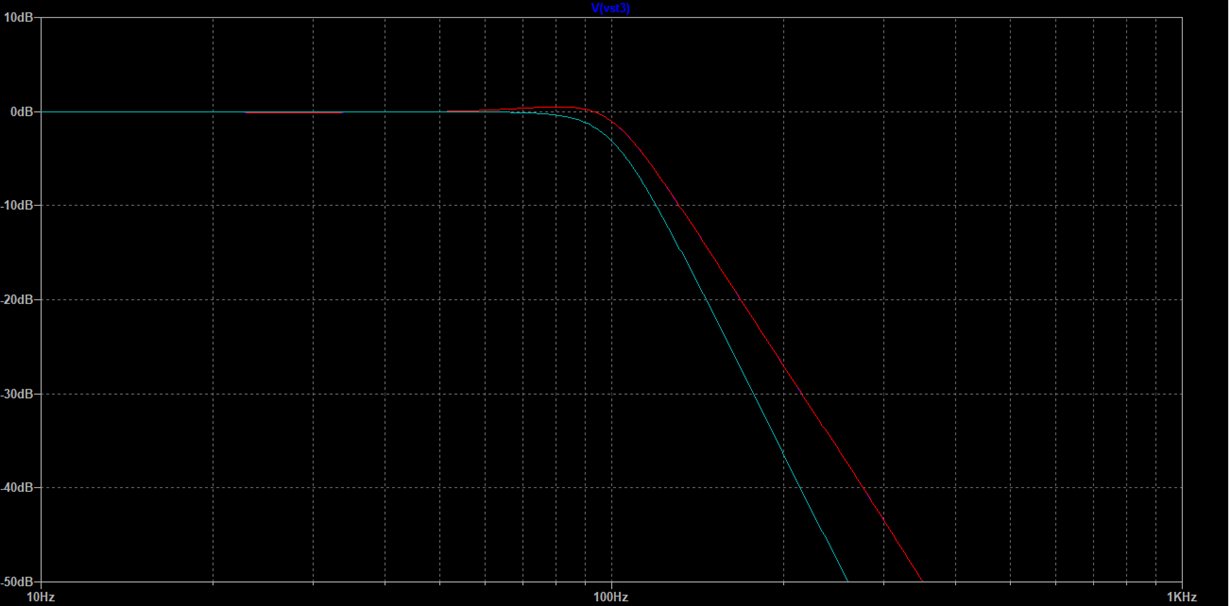Other Parts Discussed in Thread: OPA4251, OPA330
I have frequently used the LM324 to design Op-amp circuits. Just recently I stumbled upon a rather enigmatic problem for me. I'm designing a 6th Order, 100Hz low-pass, Non-inverting, unity gain, Sallen-Key Butterworth filter with an LM324 Op-amp at its core. The problem is that, when testing, instead of the expected 120dB/dec Roll-Off for a 6th Order filter, I am getting a 90-100dB/dec Roll-Off (Equivalent to a 5th Order Filter). I am using capacitors in the range of 22nF to 1uF with 5% tolerance and resistors in the range of 1KOhms and 30KOhms with 1% tolerance. When inputting design data of the filter parameters to WEBENCH: Filter Design Tool, turns out that there are also capacitors on the nF to the uF range.
After browsing in the forum, looking for some information and related issues, I found a similar problem but with the OPA330. There it was suggested that high resistances were most likely altering the filter's response. I also found, by browsing through the web, information regarding to the Q factor, filter coefficients, gain, cut frequency and GBW relationship. So far I have determined I need a 20KHz GBW Op-Amp.,
What has come to my attention however is the fact that, in the LM324 datasheet, there is a note regarding to capacitive load driving capability of the IC which is limited to 50pF, which is gain dependant. This note does not exist in the OPA330, however a figure is provided showing the overshoot vs the load capacitance. Adittionally, from LM324 datasheet in the voltage follower pulse response figure, it is shown that the Op-amp can achive a 0.25 V/uS Slew Rate whereas the OPA330 has a 0.16V/uS and the OPA4251, recommended by the WEBENCH: Filter Design Tool, has a Slew Rate of 0.01V/uS and a GBW of 35KHz, instead, the LM324 has a 1MHz GBW.
In essence, everything boils down to the following questions:
- I assuming the LM324 is an apropriate yet oversized core element for the filter I am bulding, am I right asumming such thing?
- Does the capacitive driving capability of the LM324 has something to do with slower roll-off in active filtering?
- Given a certain Op-Amp, is the maximum allowed capacitor value limited to the device's capacitive load driving capabilities? if not, which is the recommended capacitance value range to use in an active filter with a given Op-Amp and/or how to determine it?
- Can the Slew Rate degrade the filter response (make the roll-off band look like a 5th order filter instead of a 6th one, I am pretty certain it is the opposite)?
- What are other possible causes that may slow the roll-off speed of the filter (getting a 5th order roll-off instead of a 6th one)?
- Can capacitor dielectric material affect roll-off speed?
- Is an Op-Amp model swap recommended?, Which would be the characteristics to look for?, Are there any Op-Amps tailored for filtering?
- Are there any hidden issues/considerations with using the non-inverting configuration that I have missed?
I'd like to thank you beforehand for taking the time to look at this issue, I may as well suggest to include a component value modification feature (for capacitors) in the WEBENCH Filter Design tool.




